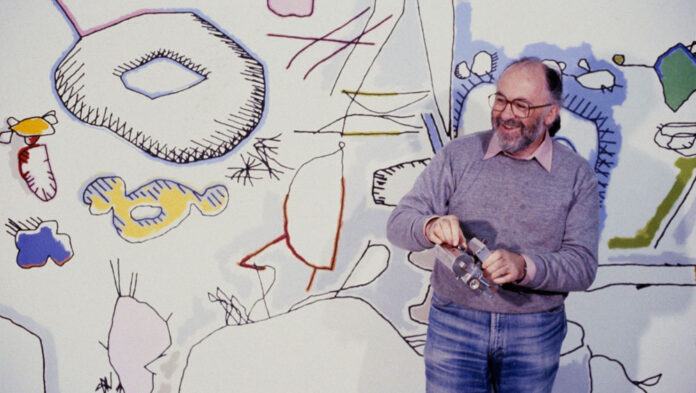Generative art may have its roots in Dada artists in the early 20th century. But artist Harold Cohen is credited with pioneering the technology-driven genre. He became one of the first practitioners of the automated art when he built a code-start machine. She could create figurative paintings.
In the late 60s, the artist Cohen worked as a lecturer at the University of California at San Diego in the department of fine arts. Around the same time, computer science researchers at the university began using artificial intelligence to break new ground in mathematics. Inspired, Cohen began exploring the use of computers in 1968. And by the early 70s, he had built a computer system called AARON to create paintings from pre-programmed algorithmic code.
He eventually presented AARON and aesthetic drawings derived from it at the Los Angeles County Museum of Art. A new exhibition at London’s Gazelli Art House celebrates Cohen’s enduring contributions to art and technology.
The presentation, titled “AARON Retrospective”, came two months after the London dealer announced the presentation of Cohen’s property. The artist died in 2016 at the age of 87. The exhibition will be available until 16 November. It includes 18 aesthetic drawings by Cohen and the vintage steel machines Cohen used to create them.
This is not the first exhibition dedicated to Cohen’s work. The first one took place during the Code of Arms group showcase in 2021 and focused on a pioneering AI artist. The work Cohen created with his then-nascent technology bears little resemblance to the sleek graphical aesthetic art associated with today’s AI-generated images.
His multicolored aesthetic drawings show figures often gathering during collective leisure, as well as curious portraits and abstract forms intertwined against a bright pink background. Gallery founder Mila Askarova said the exhibition represents a full cycle of what Cohen has done in his long career leading the development of his car.
Cohen moved from the abstraction of forms to the concretization of figures. He continued to hone the capabilities of the program. In aesthetic drawings created from the 1980s to the mid-2010s, groups of figures can be seen balancing in sync in the middle of an exercise, while bright abstract forms merge together in cartoonish designs.
A retrospective look at Cohen’s work raises questions about the autonomy of technology and its promise of collective progress as the virtual landscape increasingly permeates our reality. Like sculptural forms in a showcase, various modifications of Cohen’s machine stand out. One late 1960s bot named Turtle, a steel mechanism made up of three stacked boxes with an analog interface, seems to be today’s to look like something out of an old sci-fi movie.
Used for painting, Turtle highlighted the technology from which AARON was built. For another machine released later in 1980 called the “Drawing Machine (Arm)”, a robot made of steel, copper and plastic, Cohen attached an arm that improved on his predecessor’s drawing skills.

























